16+ Sample Web Hosting Agreement
-
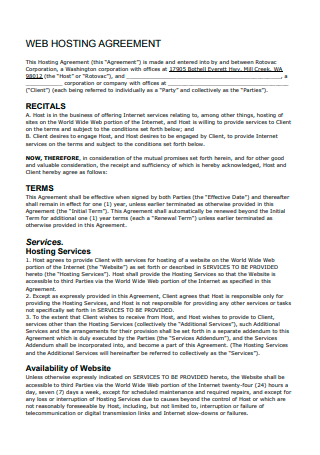
Web Hosting Agreement Template
download now -
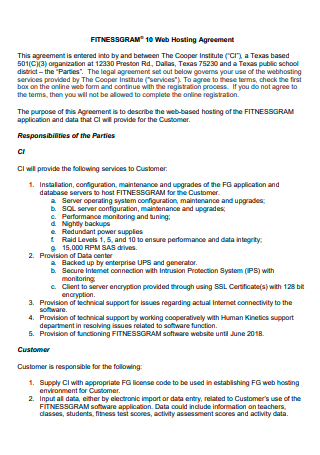
Basic Web Hosting Agreement
download now -
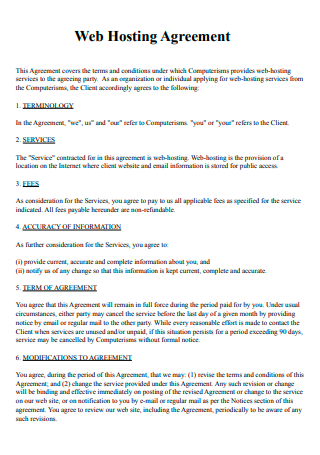
Printable Web Hosting Agreement
download now -
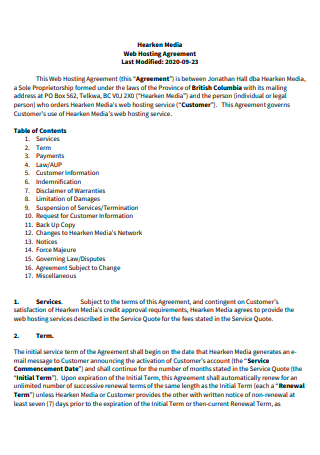
Web Hosting Agreement in PDF
download now -
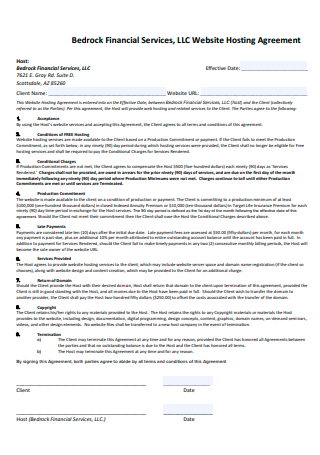
LLC Website Hosting Agreement
download now -
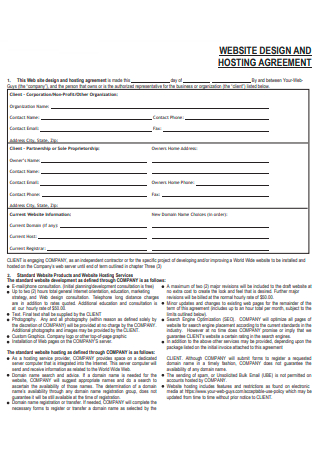
Website Design and Hosting Agreement
download now -
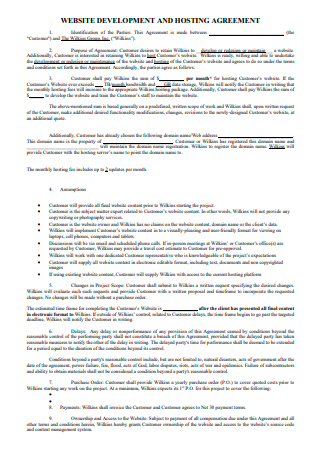
Website Development and Hosting Agreement
download now -
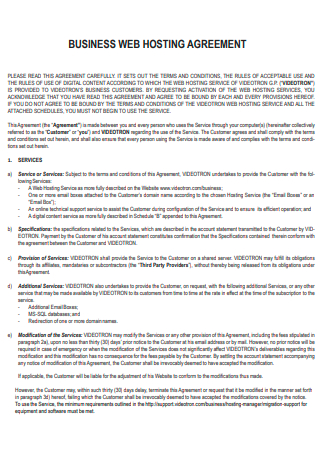
Business Web Hosting Agreement
download now -
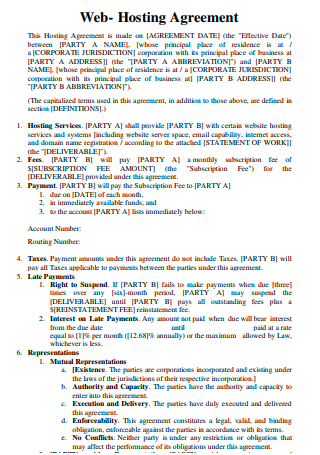
Web Hosting Agreement Example
download now -
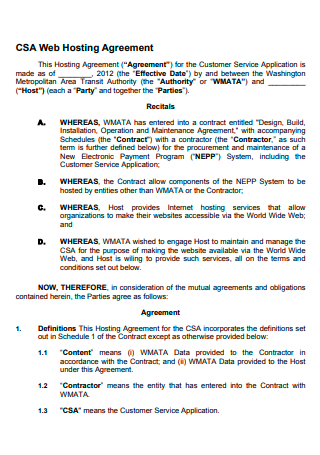
Sample Web Hosting Agreement
download now -
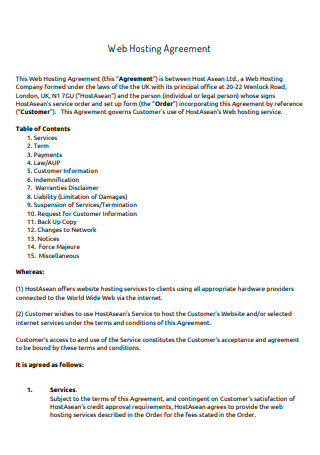
Formal Web Hosting Agreement
download now -
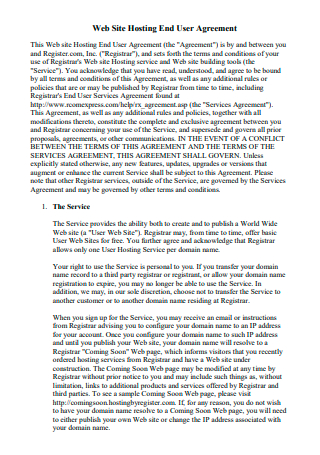
Web Site Hosting End User Agreement
download now -
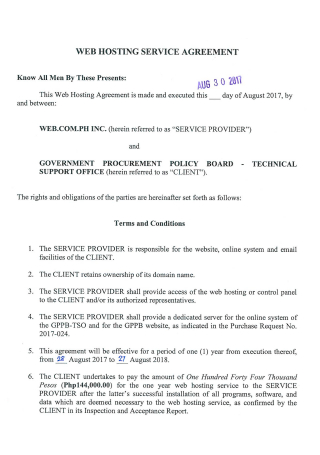
Web Hosting Service Agreement Template
download now -
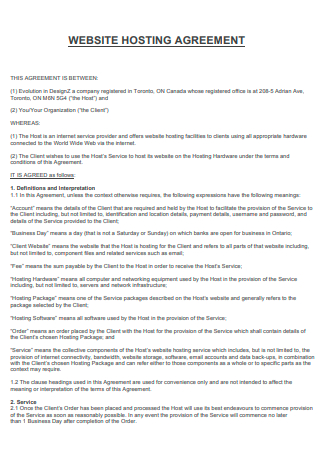
Website Hosting Agreement
download now -
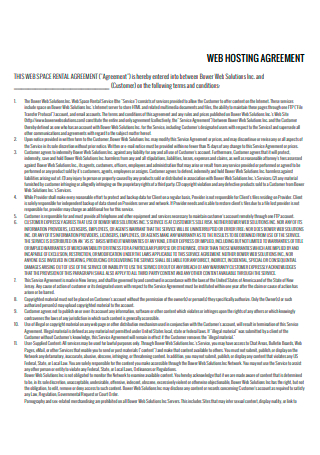
Simple Web Hosting Agreement
download now -
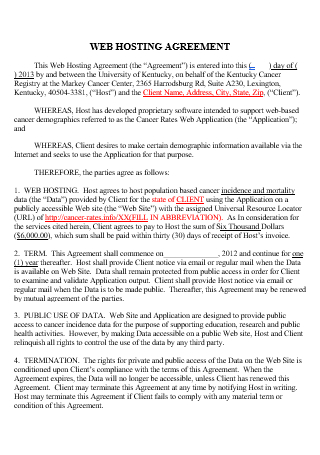
Web Hosting Agreement in DOC
download now -
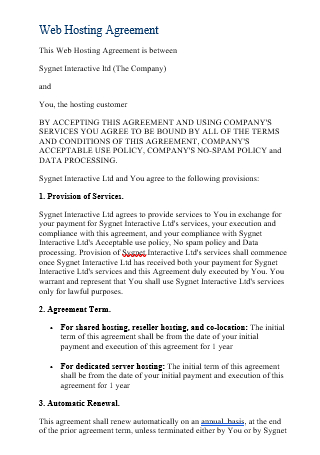
Draft Web Hosting Agreement
download now
FREE Web Hosting Agreement s to Download
16+ Sample Web Hosting Agreement
What Is a Web Hosting Agreement?
What Is Web Hosting?
Types of Web Hosting
What Should You Expect from Your Provider?
5 Steps of Web Hosting:
FAQs
What Is Web Hosting for Beginners?
Is It Necessary to Buy Hosting?
What Is Difference Between Website and Domain?
These days building a website is easier and more accessible than ever, however, it is vital that you know the fundamental principles at work. In order to show how hosting works and illustrate what new users need to know before getting started, this article will provide a comprehensive guide to the basics of Web Hosting Agreement.
What Is a Web Hosting Agreement?
The Web Hosting Agreement is an agreement between a web host company and the user or client whereby the web host company agrees to provide web hosting and related services such as email capability in relation to the site, domain name registration, and other services as determined by web host company. Web Hosting is the business of housing, serving, and maintaining files for one or more web sites. Web host companies provide space on a server and also provide connectivity to the Internet for a certain rental fee. Web host companies can also provide data center space. The Client uses the internet to connect with the server and display the desired content to the user. The scope of hosting services varies greatly. Furthermore, some hosting companies even provide server space for file maintenance and other web services. The web host generally guarantees an uptime to all its web servers. If uptime for the client’s web server falls below a minimum uptime, web host will be responsible to credit the client.
What Is Web Hosting?
Web hosting provides a secure place to store online content. The code, images, videos, and text that comprise a website all have to be stored somewhere. Without a stable digital repository, none of us could consistently access content on the web. That makes hosting one of the most critical parts of developing an online presence for anyone, from huge companies to small-scale personal accounts. This allows users to store content offsite, reducing local storage costs and the associated physical footprint. It also makes it easier to build a genuinely durable web presence, with built-in advantages like back-ups for security and support. Some web hosting happens locally via personal computers or servers, but cloud-based third-party providers are used more frequently. Once you start searching for a hosting service, you should be able to find a wide range of both free and paid options to consider.
Besides, web hosting services work by maintaining stable and secure storage spaces. While web hosts provide more than just simple data storage, it’s a core part of their functionality. Hosts store data on hardware called web servers, which allows for easy maintenance and access by online users. Without a large enough host capacity and proper maintenance, websites may behave erratically. That creates a more time-consuming process for your site’s visitors, in turn impacting your business’s sales and depriving your audience of information.
Types of Web Hosting
Third-party hosting services shift the burden of setup and maintenance away from the user, and they do this in many different ways. Here, you can explore some of the different types of web hosting available:
What Should You Expect from Your Provider?
Stability and security are most important for all users, but different projects and clients have their own unique needs. Some may only require static storage for a simple, primarily text-based website, while others require more dynamic functionality. You may also want access to custom email addresses or sub-domains, particularly if you are running a small business or multi-faceted project. Given the plethora of options available, it is important to compare costs and functionality when comparing different service providers and their subscription plans. If you don’t anticipate growing your site dramatically anytime soon, opt for the simplicity and lower costs of shared, cloud, and VPS solutions. They are especially useful for low-maintenance websites and static pages that don’t require routine updates or heavy multimedia content.
Otherwise, look to providers that offer plenty of room for growth. Consider services that go beyond domain registration and hosting, even if you do not think you’ll need them immediately. If you plan to manage large amounts of content or eCommerce activity, consider starting your search among the mid-range options and avoiding those that only cost less.
5 Steps of Web Hosting:
Hosting a website takes five straightforward steps. They are the following:
Step 1: Research Web Hosting Providers
Web hosting is just like any other consumer product or service. Hence, all web hosting providers are not the same. Some are undoubtedly better than others. Here is the thing, there are dozens, if not hundreds of different web hosting providers on the market today. Your research process can help narrow your search. You will be able to eliminate certain hosts right away. Also, there are web hosting providers out there that specialize in speed, while others prioritize customer service. Some providers are best for small business websites and others are best for agencies or enterprises.
Step 2: Determine Your Budget
Your budget is more than picking a price point. In fact, it will also depend on the features you need and the type of hosting that you want. You can find hosting providers that offer plans for less than $1 per month, and other providers offering plans for $2,000 per month. Moreover, having a rough idea of what you are willing and able to spend will at least help you narrow down your options. Note that cheaper does not mean better. In fact, cheap web hosting is frequently an indicator of bad web hosting services. While price does not automatically equate to quality, it I s usually a good indication of how many additional features and benefits you will get with the plan.
Step 3: Choose a Hosting Type
After finding the good providers, take a look at the different types of hosting. These are the main options to choose from:
- Shared hosting
- VPS hosting
- Dedicated hosting
- Cloud hosting
However, one of these hosting types is going to work much better for you than the others.
Step 4: Select Your Hosting Plan
Now, it is finally time to choose your hosting plan. Find a provider that offers the type of web hosting option you need at a price point that is within your budget. You will likely have at least a couple of choices that fit this description. So here are some other factors that you should keep in mind when you are evaluating a hosting plan:
Uptime. Uptime is the most important feature in web hosting, and basically just means the time your site is live on the internet. Any time your site is down, it won’t be reachable by anyone, so you really need as little downtime as possible. Most good web hosts will offer an uptime guarantee in their plans, and compensate you if they fail to meet that promise.
Resources. You need to make sure that your plan has enough resources to accommodate your website content and traffic. The first thing to look at is RAM, which is your storage. 4 GB of RAM is enough for an average website. That is the minimum I would recommend for you. Next, you’ll have to consider the bandwidth offered in the plan. 120 GB of bandwidth is enough for 2,000 daily page loads of a 4 GB website. So, if you are expecting more traffic or plan to have a larger website, you need to get more bandwidth.
Customer Support. You may not think so right now, but aside from the performance of your hosting plan, customer service should be your next priority. Realistically, something is bound to go wrong at some point. That is just the nature of the web hosting world. It happens to everyone, and your site probably won’t be immune from it. During a time of trouble, you want to be able to get in contact with your web host immediately. So, look for a plan that offers 24/7 support via phone and live chat. When it comes to shared hosting, you won’t have to do much to make sure the server is secure and optimized. With VPS and dedicated hosting, however, you can opt for a managed plan, where the provider takes care of the IT legwork, or an unmanaged plan where it’s all on you. Aside from that, you should also look for providers that have a knowledge base and resource center that will teach you how to do certain tasks on their platform. This type of customer support can really help you get the most out of your web hosting plan.
Renewal Rates. You need to look beyond the introductory rate of your web hosting plan to make sure that it will continue to fit within your budget in the coming years. It’s common practice in the web hosting industry for providers to heavily discount new contracts, and then increase the fees when it’s time to renew. Normally, you can lock in the best possible rate by committing to the longest-term length, which is usually up to 36 months. But make sure you know how much your plan will cost you at the end of that period
Freebies, Add-ons, and Additional Features. You should also be looking for plans that give you the best value for your money. Most hosting providers will include some extras in their plans as an incentive for you to sign up. Here are some common features to look for:
- Free domain (usually for the first year)
- Free SSL certificate
- Free cPanel license
- Google Ads credit
- Free site builder
- Free site migration
- Unlimited email accounts
- Automatic backups
Most plans come with a money-back guarantee as well. 30 days seems to be the industry standard for this, but there are plans that offer up to 97 days for you to change your mind.
Step 5: Register Your Domain Name
The domain name is your digital address. This will be how everyone will get to access your website and its content. Included this step at the last part because you can potentially register your domain name from your hosting provider when you sign up for a hosting plan. Sometimes this will even come free depending on the plan and provider you go with. But you can register your domain with a third-party website instead of going that route. Getting your domain from a web host is not necessarily wrong. So, it’s fine if that’s what you prefer. Regardless of where you get it from, this step needs to be completed in order for your website to be live on the web.
FAQs
What Is Web Hosting for Beginners?
When a hosting provider allocates space on a web server for a website to store its files, they are hosting a website. Web hosting makes the files that comprise a website like code, images, etc. available for viewing online. Every website you have ever visited is hosted on a server.
Is It Necessary to Buy Hosting?
If you want your website to be live online—in other words, if you want anyone other than you to see it—then a website hosting package is a necessary part of the equation. Web hosting servers are the space where your website can live and be stored while being accessible on the larger web.
What Is Difference Between Website and Domain?
Any website depends on the three components: site files, domain name, and web host. A website is a collection of linked web pages. A domain is a user-friendly version of an IP address that enables users to find websites online. Every domain consists of a protocol, domain name, and extension.
Nowadays, the costs associated with web hosting companies will vary across providers. The good thing is, most of the options we covered here have relatively similar pricing options. Hosting a small project on a basic plan can potentially cost as little as a few dollars a month. Most hosting services offer their own comprehensive support via email or telephone after you report an error. They also streamline many of the incidental services you would expect, including visitor metrics and interface support. Pro users may enjoy the control and manageability of a home setup, but it is not for everyone.
If your eyes start to glaze over while reading lists of features and checking pricing plans, switch gears and spend some time with user reviews. It is often super-helpful to read through others’ experiences before signing up. Given that there are so many hosting options to consider, it is easy to get overwhelmed comparing them all.
